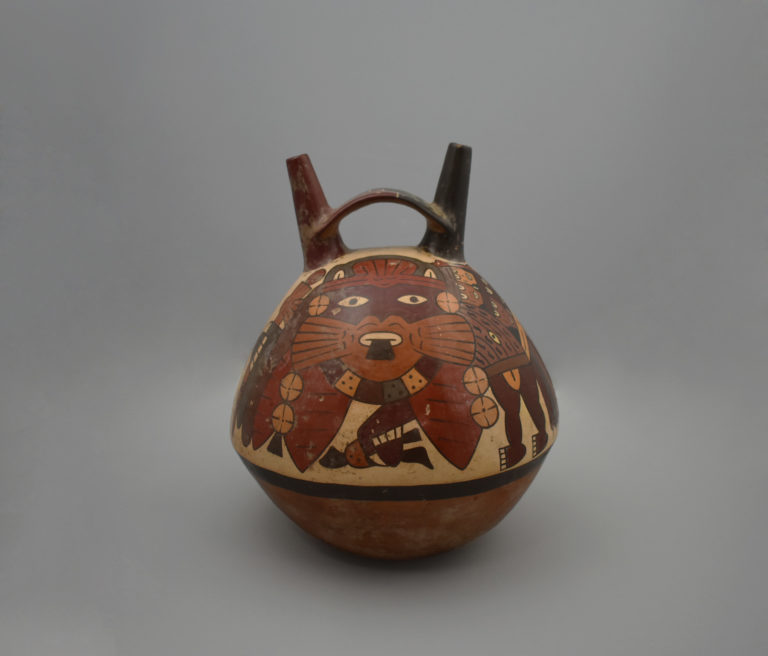- Collections
- South America
- Sitrrup Jar
Title: Stirrup Jar
Date: 100 BC – AD 700
Culture: Nasca (Peru)
Credit: Gift of Quintus H. and Mary H. Herron
Material: Painted earthenware
Size: 11.5” H x 8.5” Diam.
On View: No
The Nasca civilization flourished on the south coast of Peru from 100 BC to AD 800. Nasca vessels were mold-made, many with double spouts. The predominant type of decoration is a polychrome painting on a smooth surface, with a white or tan background that lacks molded details or textual elements. The designs are often figurative and incorporate numerous details.
This jar features one of ancient Peru’s most frequently depicted images, a supernatural feline being. The design is the same on both sides. It shows a standing figure bent at the waist to conform to the rounded shape of the vessel. The facial area is emphasized, and the mask or headdress is rendered in great detail. The figure is believed to be some sort of Nascan deity, thus adding to the cultural significance of this pot.

